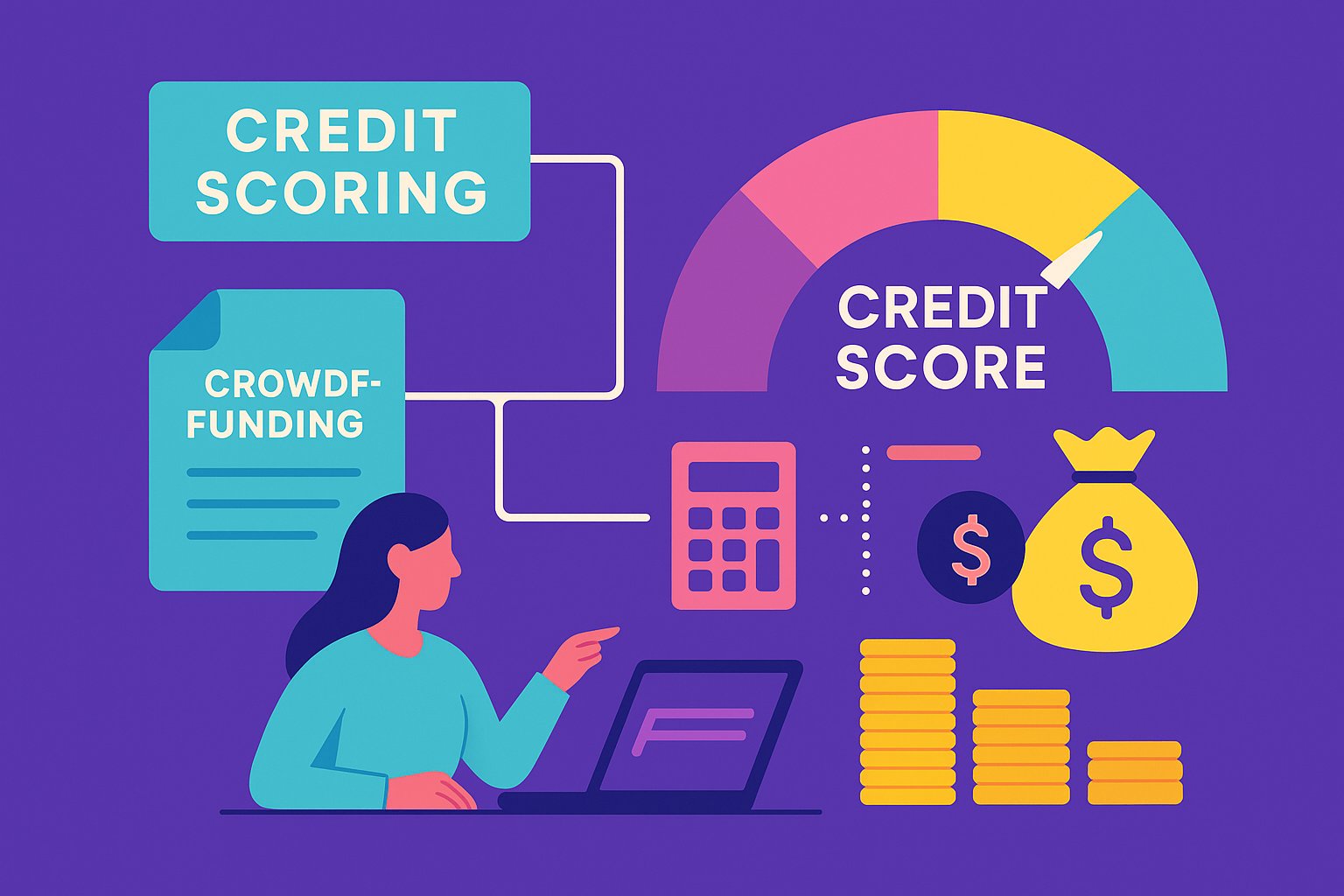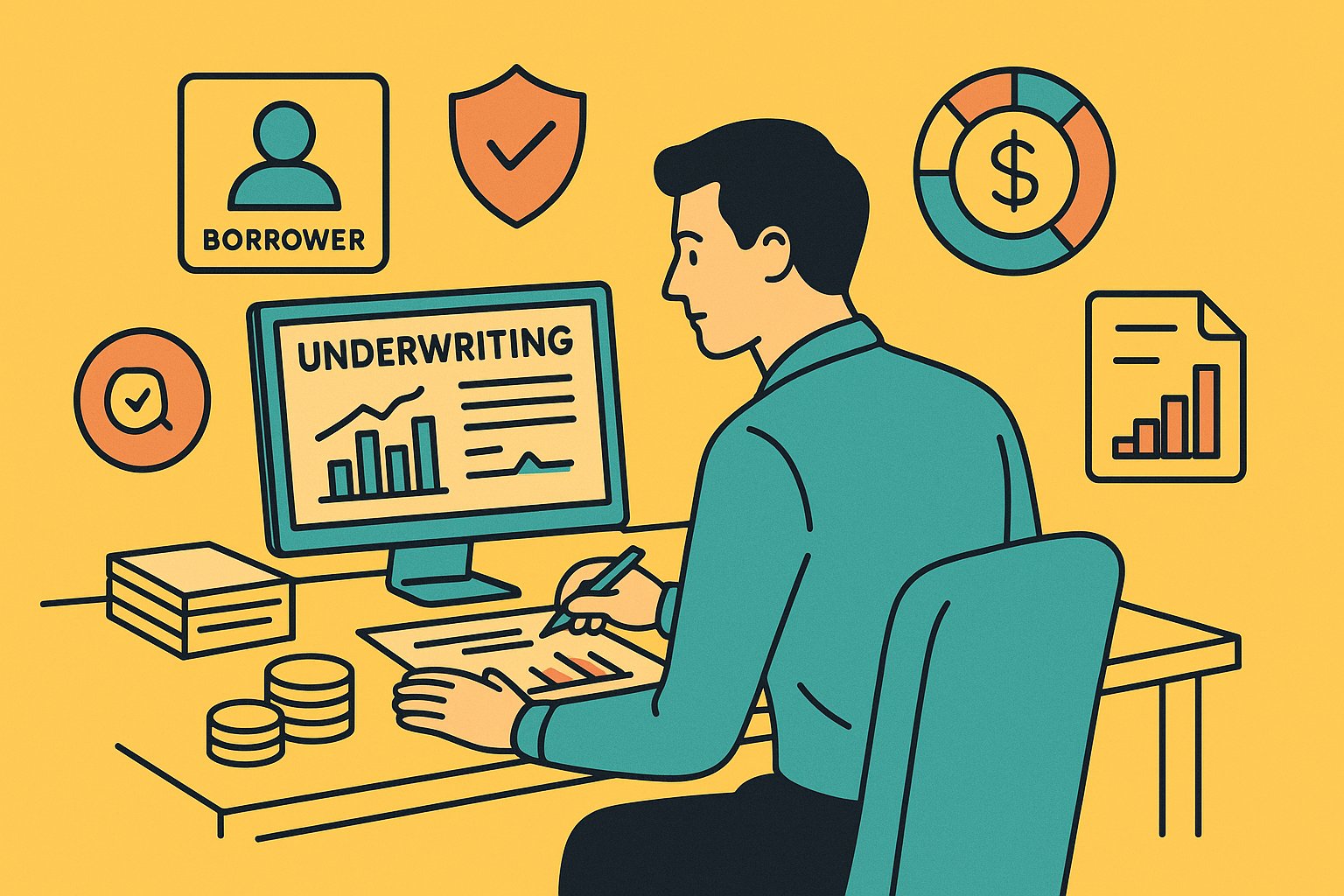Peeling Back the Credit Score Curtain
Every borrower in the world of debt-based crowdfunding dances to the tune of a three-digit score, but what does it truly mean? At first glance, credit scores can appear as impenetrable codes that determine whether you secure funding or see your application stalled. In reality, credit scoring is a blend of time-tested factors—payment history, debt levels, credit history length, account mix, and recent inquiries—woven together to estimate a borrower’s likelihood of repaying. For debt crowdfunding platforms, which connect individual and institutional lenders with prospective borrowers, understanding these scores is crucial. This article unpacks the mechanics of credit scoring, demystifies how platforms use these scores to underwrite loans, and explores why balancing credibility and opportunity lies at the heart of this transformative lending model.
Unraveling the Credit Score Mystery
When you see a five-letter grade—A, B, C, D, E, or F—on a debt crowdfunding platform, that grade often reflects a credit score range underneath. Traditional credit scoring models, like FICO or VantageScore, assign scores between roughly 300 and 850. Each digit represents a borrower’s financial habits: consistently paying bills on time, maintaining low revolving balances, and holding longer credit histories translate into higher scores. Conversely, late payments, maxed-out credit cards, or multiple recent account openings can pull scores downward. For debt crowdfunding, platforms typically map these established models into their own grading systems, so an “A” borrower may correspond to a FICO score of 760 or above, while an “F” borrower might fall below 620. By demystifying this translation, borrowers and investors alike gain clarity on the thresholds that unlock favorable interest rates and elevate shareable risk profiles.
The Essential Ingredients of a Credit Score
Beneath every credit score lies a recipe of five core ingredients. First, payment history comprises roughly 35 percent of a FICO score. Late payments, collections, and charge-offs cast long shadows, signaling to lenders that repayment reliability may be shaky. Second, credit utilization—the percentage of available revolving credit you’re using—makes up about 30 percent. Carrying a balance that exceeds 30 percent of your credit limit can send red flags, while low utilization suggests fiscal discipline. Third, length of credit history accounts for around 15 percent; older accounts (which have longer track records of timely payments) bolster your score. Fourth, credit mix, or the variety of account types (credit cards, installment loans, mortgage, and so on), constitutes 10 percent; a healthy blend of revolving and installment credit implies adaptability. Finally, new credit inquiries contribute the remaining 10 percent. Each hard inquiry—when a lender pulls your report for loan approval—temporarily nudges your score downward. Understanding the weight of each ingredient helps borrowers prioritize targeted improvements, and enables investors to see beyond a solitary number to the story that number tells.
Why Credit Scores Command Respect in Debt Crowdfunding
Debt-based crowdfunding thrives on trust: lenders must feel confident that borrowers can—and will—repay. Credit scores function as swift credibility proxies, allowing platforms to triage applications at scale. When a borrower submits documentation—bank statements, pay stubs, or tax returns—platform underwriters cross-reference this data with credit scores to arrive at a risk profile. Borrowers with higher scores often secure lower interest rates and lower platform fees, because they pose less perceived risk. In contrast, lower-scoring borrowers may face steeper rates or stricter approval criteria, even if their qualitative story—such as a budding business venture—shows promise. For investors scanning dozens or hundreds of loan listings, credit scores serve as initial filters. By bundling these metrics into an intuitive grade or letter, platforms simplify the decision-making process, fueling faster, more efficient matches between lenders and borrowers.
Proprietary Scoring Models vs. Traditional Scores
While many platforms lean on established credit scores, an increasing number have built proprietary scoring models to capture nuances that conventional scores might miss. These bespoke models may incorporate additional variables—income volatility, employment stability, education level, or cash flow patterns—forming a more robust picture of borrower reliability. For instance, a self-employed graphic designer whose earnings fluctuate seasonally could present a lower FICO score yet demonstrate consistent net-positive cash flow in bank statements. A proprietary model trained on platform-specific data may recognize this stability and assign a higher internal grade than traditional scores would warrant. Borrowers should investigate how their chosen platform generates risk assessments, paying attention to whether nontraditional factors—such as rent payment histories or utility bill timeliness—can bolster their grade beyond standard credit scores. By understanding these models’ extra dimensions, borrowers can highlight the strengths that may otherwise remain hidden.
Reading Between the Lines: What Underwriters Truly Seek
Beyond raw scores and proprietary grades, savvy underwriters delve into qualitative nuances that color borrower reliability. A borrower with a 720 FICO score but a 50 percent debt-to-income ratio (DTI) may flag caution: high DTI indicates that half of income already services other debts, leaving limited cash to absorb new payments. Conversely, a borrower with a 650 score but a 20 percent DTI in a growing industry—like renewable energy services—may receive more favorable treatment. Underwriters often examine the ratio of stable income to fixed obligations, verifying that contract work or gig economy earnings are truly repeatable. Employment tenure also matters: a consistent five-year track record at a stable employer signals lower default risk than a job-hopping history. Finally, they review public records for liens, judgments, or recent bankruptcies. By appreciating these subtleties, investors can interpret credit scores more judiciously, and borrowers can present supplementary documentation—profit-and-loss statements, industry awards, or letters from employers—to strengthen their narrative where scores alone fall short.
Boosting Your Creditworthiness Before Applying
For borrowers who plan to tap into debt crowdfunding, patience and preparation can yield powerful dividends. Before clicking “submit,” consider a targeted pre-application audit. First, pull your full credit reports from Equifax, Experian, and TransUnion, scanning for inaccuracies—stale delinquencies or accounts you never opened. Dispute and correct any errors swiftly, as removing a single misplaced late payment can boost your score significantly. Next, address credit utilization: aim to keep balances below 30 percent on each card and overall. If possible, pay down high-interest balances or transfer them to a lower-rate card, being mindful of fees and timing to avoid hard inquiries close to your application date. Third, reinforce payment history: if you’ve missed a payment recently, contact creditors to negotiate a goodwill adjustment or set up automatic payments to prevent future lapses. Finally, limit new credit inquiries in the months ahead of applying—multiple hard pulls can shave points and signal higher risk. These steps demonstrate fiscal responsibility, enhancing the odds of approval and securing a more favorable grade.
Decoding Common Misconceptions and Pitfalls
Credit scoring myths abound. One pervasive misconception holds that closing old accounts automatically boosts scores—when in reality, closing a seasoned card can shorten average account age and inadvertently lower your score. Others believe that carrying a small balance helps—yet in truth, paying off balances in full each cycle benefits both your utilization ratio and payment history. Additionally, some borrowers think that applying for multiple loans on different platforms simultaneously multiplies approval chances. In fact, each hard inquiry can dent your score, and lenders comparing notes across platforms may view your actions as financial desperation. Cogent borrowers recognize that transparent communication—explaining unique life events, like medical emergencies that led to a one-time late payment—often carries more weight than generic denial letters. By dispelling these misconceptions, applicants can steer clear of avoidable self-sabotage and present a more consistent, compelling credit profile.
Strategies for Investors: Turning Scores into Actionable Insights
Investors seeking attractive ROI from debt crowdfunding must learn to interpret credit scores strategically. Rather than blindly funding all “B-graded” loans, consider the context: what is the platform’s historical default rate for that grade? If, for example, “B” loans default 7 percent of the time, while “C” loans default 18 percent, a nuanced approach may surface: funding a diversified mix of high-“B” loans blended with higher-yield “C” notes could achieve a risk-adjusted return that outpaces pure “B” portfolios. Look beyond the headline grade to examine borrower-specific metrics—DTI, length of credit history, and employment stability. Seasoned investors also track cohort performance over time, adjusting allocation percentages as default patterns emerge during economic cycles. Finally, consider the potential upside of higher-risk borrowers with strong qualitative backstories—such as entrepreneurs with verifiable growth plans or borrowers in recession-resistant industries. By turning scores into actionable insights, investors strike the delicate balance between yield and safety.
The Future of Credit Scoring in Crowdfunding
As technology evolves, the credit scoring landscape in debt crowdfunding undergoes rapid transformation. Alternative data sources—utility payment histories, rental payments, even social media footprint analyses—are augmenting traditional credit files, illuminating the true financial health of borrowers once deemed unscorable. Machine learning algorithms sift through these expansive datasets, identifying hidden correlations that human underwriters might overlook. For example, a predictive model could flag a borrower’s grocery spending pattern as an indicator of financial distress before late payments occur. Biometric authentication and blockchain-based identity verification are also emerging, offering new ways to reduce fraud and enhance data integrity. As these innovations mature, borrowers who maintain robust digital footprints—clear transaction histories, stable online identities, and transparent income documentation—may find their creditworthiness elevated beyond what legacy systems predict. The future points toward a more inclusive, nuanced form of credit assessment, where responsible borrowers can access competitive terms irrespective of past data gaps.
Credit scoring may seem arcane at first, but when demystified, it reveals a logical, transparent framework that balances borrower credibility and investor protection. In the realm of debt-based crowdfunding, understanding how traditional credit scores and proprietary grading systems intertwine empowers borrowers to optimize applications and investors to make data-driven allocations. By dissecting score components, debunking common pitfalls, and exploring emerging innovations—like alternative data and machine learning—both sides of the platform equation gain a competitive edge. As debt-based crowdfunding continues its ascent, credit scoring remains a pivotal lever, ensuring that deserving borrowers gain the capital they need and investors enjoy steady, risk-adjusted returns.




